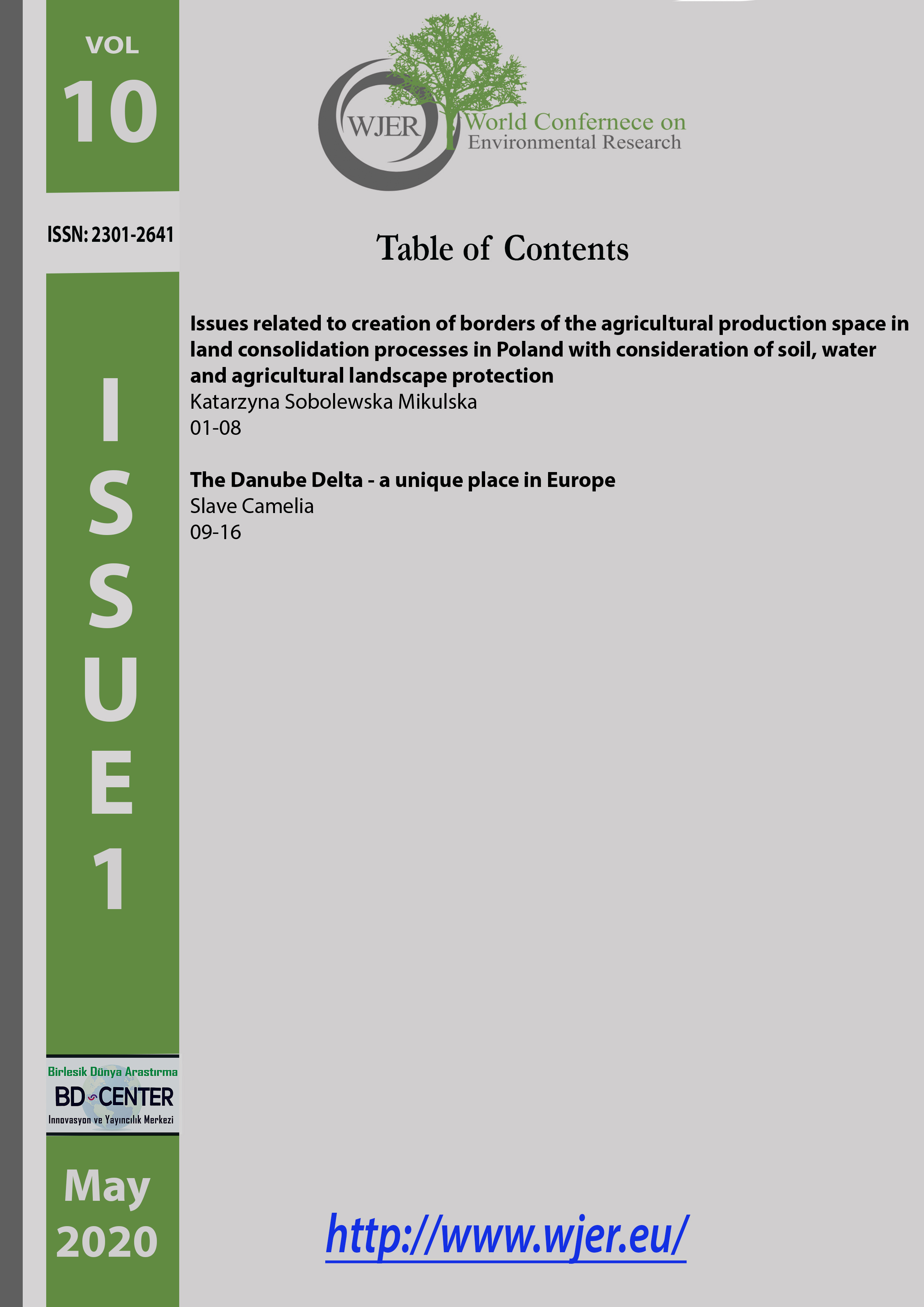The Danube Delta - a unique place in Europe
Main Article Content
Abstract
At the end of a flowing route that exceeds 2,860 km, through an impressive catchment area that covers more than 80% of Europe, the Danube, the second largest river in Europe, intersects the Black Sea forming the delta which is known as one of the great wetlands of the planet. The stretches of water and land formed here offer good living conditions to many species of plants and animals. The purpose of this study was to create several maps that present these aspects of the Danube Delta wetland using a set of GIS technologies. Since the GIS technology is an important tool in the analysis of geographic areas, we managed to obtain the following maps: hypsometric, slope, slope orientation and flood direction. Since September 1990, the Danube Delta Biosphere Reserve has been recognised internationally as a wetland; specifically, the Danube Delta Biosphere Reserve has been recognised internationally as a wetland, especially for water birds habitat. The value of the World Heritage Site of the Danube Delta Biosphere Reserve was recognised in December 1990 by including more than half of its surface into the World Cultural and Natural Heritage List.
Â
Keywords: Danube Delta, flood accumulation, natural heritage, slope, wetlands.
Downloads
Article Details

This work is licensed under a Creative Commons Attribution 4.0 International License.
World Journal of Environmental Research is an Open Access Journal. All articles can be downloaded free of charge. Articles published in the Journal are Open-Access articles distributed under Attribution 4.0 International (CC BY 4.0)
